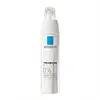What's inside
What's inside
 Key Ingredients
Key Ingredients

 Benefits
Benefits

 Concerns
Concerns

 Ingredients Side-by-side
Ingredients Side-by-side

Water
Skin ConditioningGlycerin
HumectantSqualane
EmollientPropanediol
SolventButylene Glycol
HumectantButyrospermum Parkii Butter
Skin ConditioningPentylene Glycol
Skin ConditioningDimethicone
EmollientPolymethylsilsesquioxane
Polysorbate 20
EmulsifyingGlyceryl Acrylate/Acrylic Acid Copolymer
HumectantDimethiconol
EmollientAluminum Starch Octenylsuccinate
AbsorbentAmmonium Polyacryloyldimethyl Taurate
Emulsion StabilisingDisodium EDTA
Acetyl Dipeptide-1 Cetyl Ester
Skin ConditioningWater, Glycerin, Squalane, Propanediol, Butylene Glycol, Butyrospermum Parkii Butter, Pentylene Glycol, Dimethicone, Polymethylsilsesquioxane, Polysorbate 20, Glyceryl Acrylate/Acrylic Acid Copolymer, Dimethiconol, Aluminum Starch Octenylsuccinate, Ammonium Polyacryloyldimethyl Taurate, Disodium EDTA, Acetyl Dipeptide-1 Cetyl Ester
Water
Skin ConditioningDicaprylyl Ether
EmollientPanthenol
Skin ConditioningGlycerin
HumectantPentylene Glycol
Skin ConditioningPolyglyceryl-6 Distearate
EmulsifyingPropanediol
SolventCetyl Esters
EmollientJojoba Esters
EmollientBehenyl Alcohol
EmollientAcacia Decurrens Flower Cera
EmollientHelianthus Annuus Seed Cera
EmollientCentella Asiatica Leaf Extract
Skin ConditioningPolymnia Sonchifolia Root Juice
Skin ConditioningSorbitan Oleate
EmulsifyingZinc Gluconate
Skin ConditioningMadecassoside
AntioxidantCetearyl Isononanoate
EmollientManganese Gluconate
Skin ConditioningIsohexadecane
EmollientAlpha-Glucan Oligosaccharide
CleansingSodium Hyaluronate
HumectantSodium Stearoyl Glutamate
CleansingAdenosine
Skin ConditioningMannose
HumectantCopper Gluconate
Skin ConditioningHydroxyacetophenone
AntioxidantHydroxypropyl Starch Phosphate
Capryloyl Salicylic Acid
ExfoliatingVitreoscilla Ferment
Skin ConditioningCitric Acid
BufferingTrisodium Ethylenediamine Disuccinate
Lactobacillus
Skin ConditioningMaltodextrin
AbsorbentPolyglycerin-3
HumectantBeeswax
Emulsion StabilisingPolysorbate 80
EmulsifyingAcrylamide/Sodium Acryloyldimethyltaurate Copolymer
Emulsion StabilisingCetyl Alcohol
EmollientTocopherol
AntioxidantWater, Dicaprylyl Ether, Panthenol, Glycerin, Pentylene Glycol, Polyglyceryl-6 Distearate, Propanediol, Cetyl Esters, Jojoba Esters, Behenyl Alcohol, Acacia Decurrens Flower Cera, Helianthus Annuus Seed Cera, Centella Asiatica Leaf Extract, Polymnia Sonchifolia Root Juice, Sorbitan Oleate, Zinc Gluconate, Madecassoside, Cetearyl Isononanoate, Manganese Gluconate, Isohexadecane, Alpha-Glucan Oligosaccharide, Sodium Hyaluronate, Sodium Stearoyl Glutamate, Adenosine, Mannose, Copper Gluconate, Hydroxyacetophenone, Hydroxypropyl Starch Phosphate, Capryloyl Salicylic Acid, Vitreoscilla Ferment, Citric Acid, Trisodium Ethylenediamine Disuccinate, Lactobacillus, Maltodextrin, Polyglycerin-3, Beeswax, Polysorbate 80, Acrylamide/Sodium Acryloyldimethyltaurate Copolymer, Cetyl Alcohol, Tocopherol
 Reviews
Reviews

Ingredients Explained
These ingredients are found in both products.
Ingredients higher up in an ingredient list are typically present in a larger amount.
Glycerin is already naturally found in your skin. It helps moisturize and protect your skin.
A study from 2016 found glycerin to be more effective as a humectant than AHAs and hyaluronic acid.
As a humectant, it helps the skin stay hydrated by pulling moisture to your skin. The low molecular weight of glycerin allows it to pull moisture into the deeper layers of your skin.
Hydrated skin improves your skin barrier; Your skin barrier helps protect against irritants and bacteria.
Glycerin has also been found to have antimicrobial and antiviral properties. Due to these properties, glycerin is often used in wound and burn treatments.
In cosmetics, glycerin is usually derived from plants such as soybean or palm. However, it can also be sourced from animals, such as tallow or animal fat.
This ingredient is organic, colorless, odorless, and non-toxic.
Glycerin is the name for this ingredient in American English. British English uses Glycerol/Glycerine.
Learn more about GlycerinPentylene glycol is typically used within a product to thicken it. It also adds a smooth, soft, and moisturizing feel to the product. It is naturally found in plants such as sugar beets.
The hydrophilic trait of Pentylene Glycol makes it a humectant. As a humectant, Pentylene Glycol helps draw moisture from the air to your skin. This can help keep your skin hydrated.
This property also makes Pentylene Glycol a great texture enhancer. It can also help thicken or stabilize a product.
Pentylene Glycol also acts as a mild preservative and helps to keep a product microbe-free.
Some people may experience mild eye and skin irritation from Pentylene Glycol. We always recommend speaking with a professional about using this ingredient in your routine.
Pentylene Glycol has a low molecular weight and is part of the 1,2-glycol family.
Learn more about Pentylene GlycolPropanediol is an all-star ingredient. It softens, hydrates, and smooths the skin.
It’s often used to:
Propanediol is not likely to cause sensitivity and considered safe to use. It is derived from corn or petroleum with a clear color and no scent.
Learn more about PropanediolWater. It's the most common cosmetic ingredient of all. You'll usually see it at the top of ingredient lists, meaning that it makes up the largest part of the product.
So why is it so popular? Water most often acts as a solvent - this means that it helps dissolve other ingredients into the formulation.
You'll also recognize water as that liquid we all need to stay alive. If you see this, drink a glass of water. Stay hydrated!
Learn more about Water